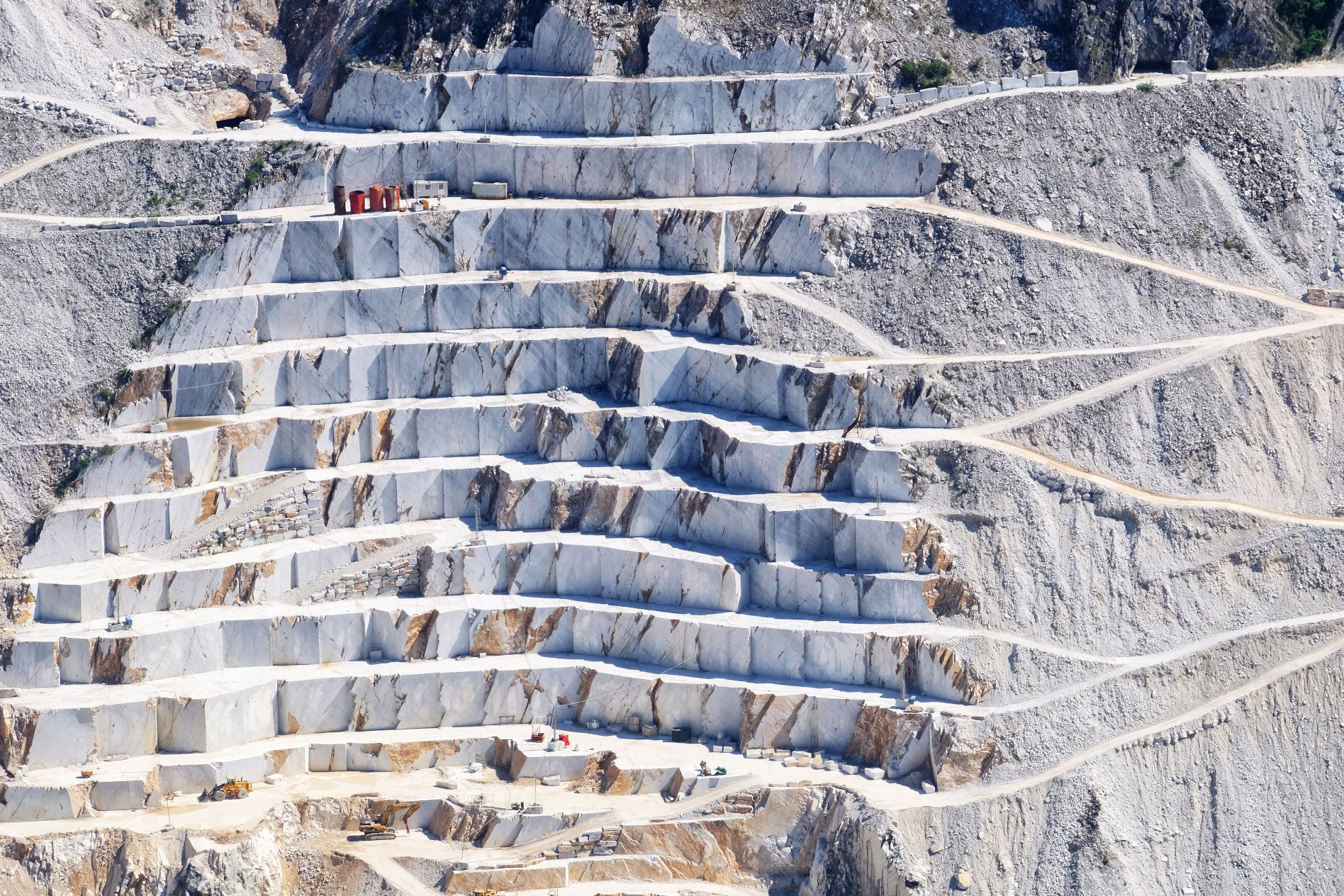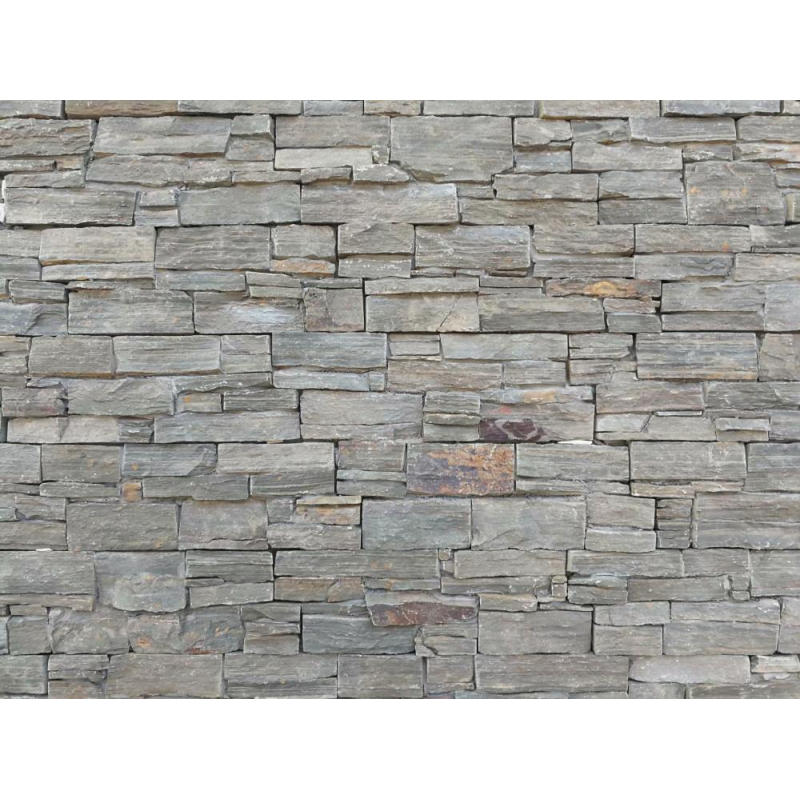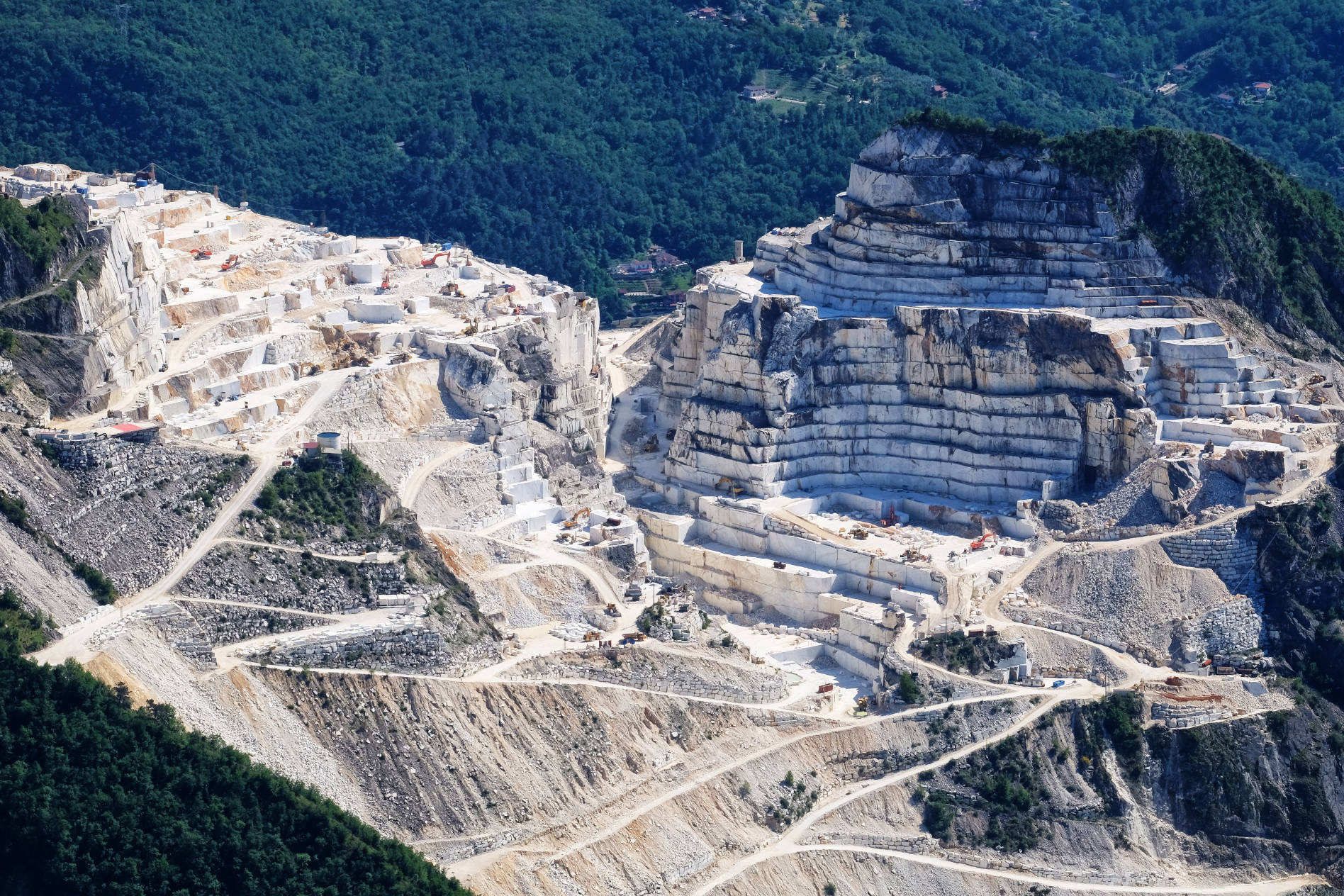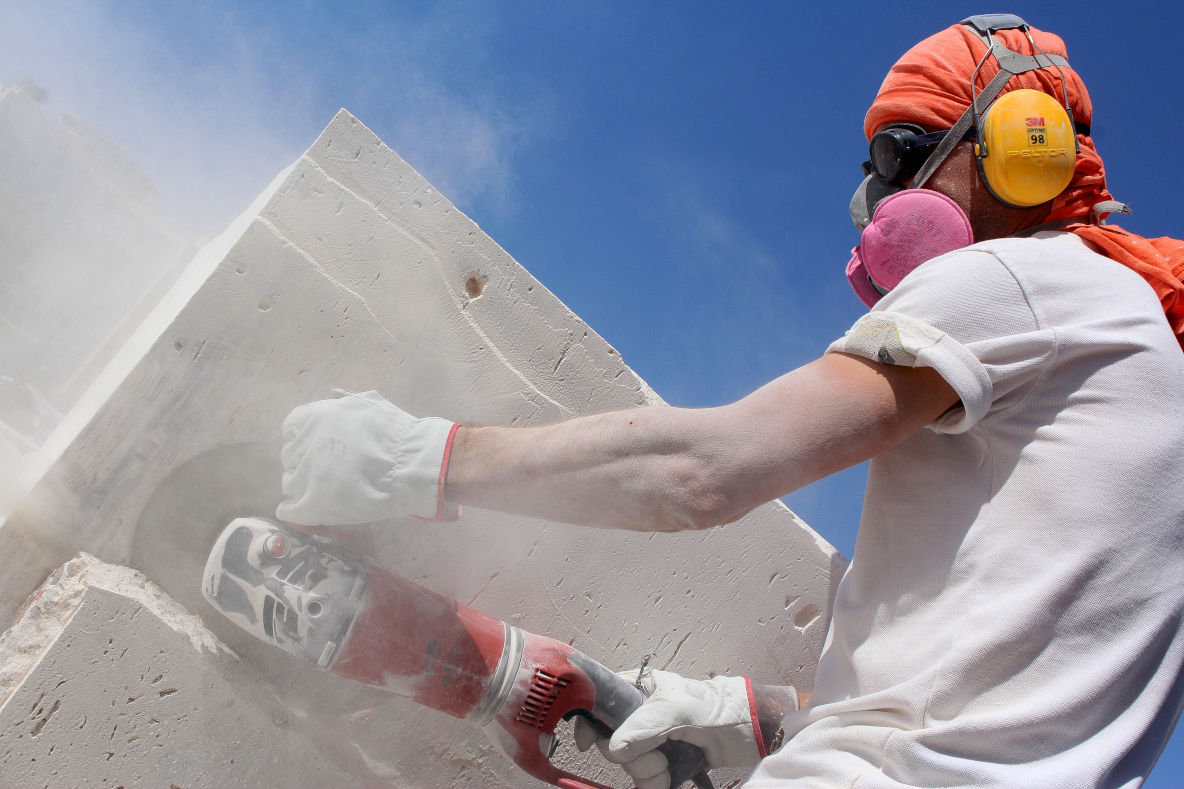

ನೀವು ಅದರ ಬಗ್ಗೆ ಯೋಚಿಸುವುದನ್ನು ನಿಲ್ಲಿಸಿದಾಗ, ನೈಸರ್ಗಿಕ ಕಲ್ಲು ನಮ್ಮ ಆಧುನಿಕ ನಾಗರಿಕತೆಯ ಆಧಾರವನ್ನು ದೊಡ್ಡ ರೀತಿಯಲ್ಲಿ ರೂಪಿಸುತ್ತದೆ. ನಾವು ವಾಸಿಸುವ, ಕೆಲಸ ಮಾಡುವ ಮತ್ತು ಖರೀದಿಸುವ ಕಟ್ಟಡಗಳಿಂದ ಹಿಡಿದು ನಾವು ನಡೆಯುವ ಮತ್ತು ಓಡಿಸುವ ನೆಲದವರೆಗೆ, ಈ ಅಗತ್ಯ ನೈಸರ್ಗಿಕ ಸಂಪನ್ಮೂಲವಿಲ್ಲದೆ ಬದುಕುವುದು ಊಹಿಸಿಕೊಳ್ಳುವುದು ಕಷ್ಟ.
ವಿವಿಧ ರೂಪಗಳ ಪ್ರಯಾಣ ನೈಸರ್ಗಿಕ ಕಲ್ಲು take from the depths of the earth and into the construction of homes, commercial buildings and roads is a fascinating one. Let us dive in and explore the origins of natural stone and how it’s made.

ನೈಸರ್ಗಿಕ ಕಲ್ಲುಗಳನ್ನು ಮೂರು ವಿಧಗಳಲ್ಲಿ ವರ್ಗೀಕರಿಸಬಹುದು: ಅಗ್ನಿ, ಸೆಡಿಮೆಂಟರಿ ಮತ್ತು ಮೆಟಾಮಾರ್ಫಿಕ್.
Igneous rocks are the result of magma or lava solidifying and cooling, either beneath the earth’s surface or ejected from volcanoes and left to cool above-ground. Granite is the most common form of igneous stone but other kinds include basalt, dunite, rhyolite and gabbro.
Sedimentary rocks form through a combination of fragments from other rocks, along with the remains of plants, animals and other organic materials. These materials accumulate in deserts, oceans and lakes before they are compressed into their final form by the weight of the earth above them. Limestone is the most common sedimentary rock with siltstone, dolomite and shale comprising other variations.
Metamorphic rocks previously existed as igneous or sedimentary stones and were then transformed due to heat and pressure applied through exposure to magma, the weight of earth above them when buried deep underground, or a combination of both. Marble is the most famous stone of the metamorphic variety and quartzite, soapstone, gneiss and jade, among others, round out this fascinating category.

ಟಸ್ಕನಿಯಲ್ಲಿ ಮಾರ್ಬಲ್ ಕ್ವಾರಿ
ನಿಸರ್ಗವು ನಿಜವಾಗಿ ಕಲ್ಲನ್ನು ರೂಪಿಸುವಲ್ಲಿ ಮೊದಲ ಹೆಜ್ಜೆಯನ್ನು ವಹಿಸಿದ ನಂತರ, ಮುಂದಿನ ಹಂತವನ್ನು ತೆಗೆದುಹಾಕುವ ಮತ್ತು ಬಳಕೆಗಾಗಿ ಮರು-ಉದ್ದೇಶಿಸುವ ಕಲ್ಲನ್ನು ಪ್ರಪಂಚದಾದ್ಯಂತದ ಕಲ್ಲು ಕ್ವಾರಿಗಳಲ್ಲಿ ಮಾನವ ಕೈಗಳಿಂದ ಮಾಡಲಾಗುತ್ತದೆ.
ಕಲ್ಲುಗಣಿಗಾರಿಕೆಯ ಪ್ರಕ್ರಿಯೆಯು ವಿಸ್ತಾರವಾಗಿದೆ ಮತ್ತು ನುರಿತ ಕ್ವಾರಿ ಕಾರ್ಮಿಕರ ಜೊತೆಗೆ ಶಕ್ತಿಯುತ ಯಂತ್ರೋಪಕರಣಗಳ ಅಗತ್ಯವಿರುತ್ತದೆ. ಕಲ್ಲನ್ನು ಮುಟ್ಟುವ ಮೊದಲು, ನಡೆಯಬೇಕಾದ ಕ್ರಿಯೆಗಳ ದೊಡ್ಡ ಪಟ್ಟಿ ಇದೆ.
ಮೊದಲನೆಯದಾಗಿ, ಭೂವಿಜ್ಞಾನಿಗಳ ತಂಡವು ಪರೀಕ್ಷಿಸಬಹುದಾದ ಕ್ವಾರಿಯಲ್ಲಿ ಕಲ್ಲಿನ ಹೊರಹರಿವುಗಳನ್ನು ಕಂಡುಹಿಡಿಯಬೇಕು. ಮುಂದೆ, ಡೈಮಂಡ್-ಟಿಪ್ಡ್ ಡ್ರಿಲ್ ಬಿಟ್ಗಳೊಂದಿಗೆ ಬಂಡೆಯೊಳಗೆ ಕೊರೆಯುವ ಮೂಲಕ ಕಲ್ಲಿನ ಮಾದರಿಯನ್ನು ತೆಗೆದುಕೊಳ್ಳಲಾಗುತ್ತದೆ. ಕಟ್ಟಡ ಸಾಮಗ್ರಿಯಾಗಿ ಬಳಸಲು ಬಯಸಿದ ಗುಣಲಕ್ಷಣಗಳನ್ನು ಹೊಂದಿದೆಯೇ ಎಂದು ಕಂಡುಹಿಡಿಯಲು ಮಾದರಿಯನ್ನು ನಂತರ ವಿಶ್ಲೇಷಿಸಲಾಗುತ್ತದೆ.
ಕಲ್ಲು ನಿರ್ಮಾಣ ಉದ್ದೇಶಗಳಿಗಾಗಿ ಬಿಲ್ಗೆ ಸರಿಹೊಂದುತ್ತದೆ ಎಂದು ಭಾವಿಸಿದರೆ, ಸ್ಥಳೀಯ ಸರ್ಕಾರದಿಂದ ಸರಿಯಾದ ಪರವಾನಗಿಗಳು ಮತ್ತು ಪರವಾನಗಿಗಳನ್ನು ಪಡೆಯುವ ಸುದೀರ್ಘ ಮತ್ತು ಆಗಾಗ್ಗೆ ಡ್ರಾ-ಔಟ್ ಪ್ರಕ್ರಿಯೆಯು ಪ್ರಾರಂಭವಾಗುತ್ತದೆ. ದೇಶ ಮತ್ತು ರಾಜ್ಯವನ್ನು ಅವಲಂಬಿಸಿ, ಇದು ಪೂರ್ಣಗೊಳ್ಳಲು ವರ್ಷಗಳನ್ನು ತೆಗೆದುಕೊಳ್ಳಬಹುದು.
ಅಂತಿಮ ಅನುಮೋದನೆಯನ್ನು ಹಸ್ತಾಂತರಿಸಿದ ನಂತರ, ಯಾವುದೇ ಶಿಲಾಖಂಡರಾಶಿಗಳು, ಕೊಳಕು ಮತ್ತು ಇತರ ಅಡೆತಡೆಗಳನ್ನು ತೆರವುಗೊಳಿಸುವ ಕೆಲಸ ಪ್ರಾರಂಭವಾಗುತ್ತದೆ ಅದು ಇಲ್ಲದಿದ್ದರೆ ಕಲ್ಲುಗಣಿಗಾರಿಕೆ ಪ್ರಕ್ರಿಯೆಗೆ ಅಡ್ಡಿಯಾಗುತ್ತದೆ. ಈ ತೊಂದರೆಯನ್ನು ಹೆಚ್ಚಿಸುವ ಅಂಶವೆಂದರೆ ಅನೇಕ ಕ್ವಾರಿಗಳು ದೂರದ ಮತ್ತು ಪ್ರವೇಶಿಸಲಾಗದ ಪ್ರದೇಶಗಳಲ್ಲಿ ನೆಲೆಗೊಂಡಿವೆ, ನಿಜವಾದ ಕೆಲಸ ಪ್ರಾರಂಭವಾಗುವ ಮೊದಲು ಸಂಪೂರ್ಣ ರಸ್ತೆಗಳು ಮತ್ತು ಸುರಂಗಗಳನ್ನು ನಿರ್ಮಿಸುವ ಅಗತ್ಯವಿದೆ.
ಕ್ವಾರಿಯ ಮುಖದಿಂದ ಕಲ್ಲುಗಳನ್ನು ಬೇರ್ಪಡಿಸಲು ವಜ್ರದ-ತಂತಿಯ ಗರಗಸಗಳು, ಹೆಚ್ಚಿನ ಶಕ್ತಿಯ ಟಾರ್ಚ್ಗಳು ಮತ್ತು ಸಮಯಕ್ಕೆ ತಕ್ಕಂತೆ ಸ್ಫೋಟಕ ಸ್ಫೋಟಗಳನ್ನು ಬಳಸಲಾಗುತ್ತದೆ. ಸಾಮಾನ್ಯವಾಗಿ ನಲವತ್ತು ಟನ್ಗಳಷ್ಟು ತೂಕವಿರುವ ಬೃಹತ್ ಬ್ಲಾಕ್ಗಳನ್ನು ನಂತರ ಮತ್ತಷ್ಟು ಕತ್ತರಿಸುವ ಮತ್ತು ಸಂಸ್ಕರಿಸುವ ಸೌಲಭ್ಯಕ್ಕೆ ಸಾಗಿಸಲಾಗುತ್ತದೆ.

ಕಲ್ಲು ಕಡಿಯುವ ಕ್ವಾರಿ ಕೆಲಸಗಾರ
ಸಂಸ್ಕರಣಾ ಸೌಲಭ್ಯದಲ್ಲಿ, ಕಲ್ಲಿನ ಬ್ಲಾಕ್ಗಳನ್ನು ಹೈ-ಸ್ಪೀಡ್ ಗ್ಯಾಂಗ್ ಗರಗಸಗಳಿಂದ ಚಪ್ಪಡಿಗಳಾಗಿ ಕತ್ತರಿಸಲಾಗುತ್ತದೆ, ಅದು ಧೂಳಿನ ಹೊರಸೂಸುವಿಕೆಯನ್ನು ಕಡಿಮೆ ಮಾಡಲು ಕತ್ತರಿಸುವಾಗ ನೀರನ್ನು ಬಿಡುಗಡೆ ಮಾಡುತ್ತದೆ. ಅವರು ಕಾರ್ಯನಿರ್ವಹಿಸುವ ವೇಗದ ಹೊರತಾಗಿಯೂ, ಗ್ಯಾಂಗ್ ಗರಗಸಗಳು ಸಾಮಾನ್ಯವಾಗಿ 20-ಟನ್ ಕಲ್ಲುಗಳನ್ನು ಕತ್ತರಿಸಲು ಎರಡು ದಿನಗಳನ್ನು ತೆಗೆದುಕೊಳ್ಳುತ್ತವೆ.
ಮುಂದೆ, ಬಯಸಿದ ಮುಕ್ತಾಯವನ್ನು ನೀಡಲು ಚಪ್ಪಡಿಗಳನ್ನು ಹೊಳಪು ಯಂತ್ರದ ಮೂಲಕ ಕಳುಹಿಸಲಾಗುತ್ತದೆ. ನಯಗೊಳಿಸಿದ ಅತ್ಯಂತ ಸಾಮಾನ್ಯವಾದ ಮುಕ್ತಾಯವಾಗಿದ್ದು, ಕಲ್ಲಿನ ಮೇಲ್ಮೈಯಲ್ಲಿ ವಿವಿಧ ಹಂತಗಳ ವಿನ್ಯಾಸವನ್ನು ಒದಗಿಸುವ ಇತರ ಆಯ್ಕೆಗಳು ಸಾಣೆ, ತೊಗಲು ಮತ್ತು ಬ್ರಷ್ ಆಗಿದೆ.
Now that the slabs are cut to the correct size and have the desired finish, the final stage in a natural stone’s journey into your home takes place at the fabricator’s facility. Here, the stone slabs are further cut to specification for each individual project which includes shaping of the edges into the detail required for installation.
Now that you know the incredible journey that natural stone takes from deep inside the earth and into your kitchen, I’m sure you’ll agree that it is certainly worth the wait. Thanks to advancements in the industry over the years and the demand that exists for natural stone of all kinds, you don’t actually have to sit around while your marble, quartzite or granite is quarried and processed.